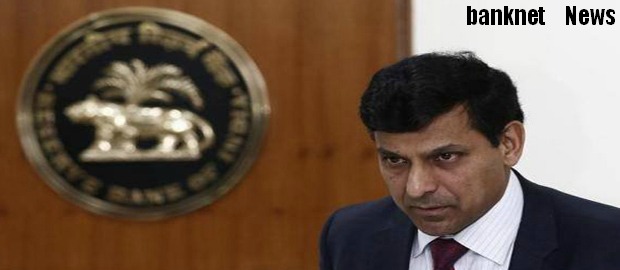

Sixth Bi-Monthly Monetary Policy Statement, 2014-15 By Dr. Raghuram G. Rajan, Governor, RBI - Feb 03, 2015 - Full Text
Assessment
2. Since the fifth bi-monthly monetary policy statement of December 2014, the International Monetary Fund (IMF) has revised its forecasts for growth in 2015 and 2016 downwards. However, these forecasts are higher than the estimates for 2014. In the United States, growth moderated towards the end of 2014, with the boost to consumption demand from the fall in crude prices more than offset by the drag on net exports from a strong US dollar. In the Euro area, economic conditions have deteriorated in an environment of deflationary pressures, political tensions in Greece and still-elevated levels of unemployment. Demand in Japan is only just beginning to recover from the impact of the consumption tax increase last year, notwithstanding massive monetary and fiscal accommodation. The yen’s depreciation, however, is helping support exports. In China, growth is slowing because of a weakening property market and excess capacity in several industries. This has prompted targeted measures to ease financial constraints faced by corporations and banks. In other emerging market economies (EMEs), growth has weakened sharply for oil exporters, whereas inflationary pressures, subdued investment appetite and a neutral fiscal stance continue to dampen growth in non-oil exporters.
3. The announcement of massive quantitative easing by the European Central Bank (ECB) in late January has reinvigorated financial risk taking, boosting stock markets across the world, even though many market participants have read the softness in crude prices and the ECB’s announcement as signifying a weaker global economic outlook. Along with the growing belief that the US Fed will stay on hold longer than previously thought, bond yields in advanced economies (AEs) have fallen to historic lows. Financial markets remain vulnerable to uncertainty surrounding monetary policy normalization in AEs as well as possibly weaker growth in China and oil exporting EMEs.
4. The revision in the base year for GDP and GDP calculation methods will mean some revision in GDP growth numbers for 2014-15 as well as in GDP forecasts. Domestic activity is likely to have remained subdued in Q3 of 2014-15, mainly reflecting the shortfall in the kharif harvest relative to a year ago. Agricultural growth is likely to pick up in Q4 with the late improvement in the north-east monsoon and in rabi sowing. Nevertheless, growth expectations should be tempered as lead indicators such as tractor and motorcycle sales and slowing rural wage growth all point to subdued rural demand.
5. The improvement in industrial activity in November 2014 was broad-based, but continuing contraction in consumer goods production underscores the persisting weakness in consumption demand (even while raising questions about measurement of production). Advance indicators of industrial activity - indirect tax collections; non-oil non-gold import growth; expansion in order books; and new business reported in purchasing managers surveys - point to a modest improvement in the months ahead. Policy initiatives in land acquisition, as well as efforts underway to unlock mining activity and to widen the space for foreign direct investment in defence, insurance and railways, should create a more conducive setting for industrial revival. Faster clearances are also helping in resuscitating stalled projects. The improvement in business confidence is visible in a pick-up in new investment intentions, especially in transportation, power and manufacturing.
6. In the services sector, the purchasing managers’ survey indicates slower activity, especially in new orders. However, other indicators of the services sector including foreign tourist arrivals, automobile sales, cargo handled at ports, and railway freight traffic suggest improvement. Overall, growth prospects will be contingent upon a turnaround in investment and a durable improvement in the business climate to complement the upsurge in business optimism. The sharp reduction in oil prices as well as in inflation is likely to increase personal disposable incomes and improve domestic demand conditions in the year ahead.
7. Retail inflation, measured by year-on-year changes in the consumer price index (CPI), edged up in December on the expected reversal of favourable base effects that had tempered upside pressures since June. A slight softening of cereal prices and a sharp seasonal fall in vegetables prices moderated the trajectory of headline inflation, despite persistent firmness in the prices of protein-rich items such as milk, meat and pulses. However, seasonal increases in vegetable prices, which typically set in around March, have to be monitored carefully. In the fuel category, prices of constituents such as electricity, coal and cooking gas remained stable in the absence of administered revisions. Consequently, the CPI registered a monthly decline for the first time since February 2014.
8. Inflation excluding food and fuel declined for the second consecutive month in December. This was largely on account of the declining prices of transport and communication since August, reflecting the impact of plummeting international crude oil prices; and softer commodity prices more generally. Inflation in respect of miscellaneous services and housing, however, declined more moderately. Weak domestic demand has restrained corporates’ pricing power and inflationary pressures in the non-food non-fuel category. Near-term as well as longer-term inflation expectations of households dropped to single digits for the first time in 21 quarters. Benign expectations are also mirrored in surveys of professional forecasters and industry conducted periodically by the Reserve Bank.
9. Active liquidity management operations under the revised framework adopted in early September have ensured that liquidity conditions have generally remained comfortable. Money market rates have evolved in close alignment with the policy repo rate, excluding occasional pressures around days of advance tax outflows and quarter-end tightness. Overnight variable rate repo/reverse repo auctions announced early in the day give markets advance intimation of the Reserve Bank’s assessment on system-wide liquidity needs for the day, allowing fine tuning of liquidity. This also reduces the need for other sector specific windows. The average daily net borrowings under the LAF (including term repos, reverse repos and MSF) have been around `850 billion in December and January.
10. Easing inflationary pressures strengthened the impact of comfortable liquidity conditions on market interest rates; sovereign and corporate bond yields declined by 50 basis points and more in Q3. However, despite a generalised fall in the cost of funds, banks have yet to pass through these effects, as also the effects of the policy rate cut on January 15, into the spectrum of lending rates.
11. With the slump in international crude prices taking its toll on exports of petroleum products, and non-oil export growth also decelerating sharply, merchandise exports shrank in Q3 of 2014-15 after two consecutive quarters of growth. Export performance has been hamstrung by weak global demand conditions and the persisting fall in unit value realisations. The real appreciation of the rupee may also have had some effect. The fall in international crude prices translated into a sizable saving on account of POL imports, despite a pick-up in import volumes in Q3. Gold imports also moderated, coming off the seasonal cum pent-up demand spurt in September-November. On the other hand, non-oil non-gold import growth remained firm and in positive territory, extending a run that began in May. Although overall imports declined in December, they recorded an expansion for Q3 as a whole on the back of the earlier rise in gold and non-oil non-gold items. As a consequence, the trade deficit widened in Q3 relative to the preceding quarter. The estimate of the current account deficit (CAD) for 2014-15 is currently placed at 1.3 per cent of GDP, significantly lower than earlier projections. The CAD has been comfortably financed by net capital inflows, mainly in the form of buoyant portfolio flows but also supported by foreign direct investment inflows and external commercial borrowings. Accordingly, there was accretion to India’s foreign exchange reserves to the tune of USD 6.8 billion in Q3.
Assessment of the Indian Economy ... Read more
Policy Stance and Rationale ... Read more
Financial Markets ... Read more
Restructuring... Read more
Banking and Financial Structure
RBI Monetary and Credit Policies (1999-2015) - Notifications, Press Releases, Reports - Click here

BANKING

FINANCE

INSURANCE

TECHNOLOGY

Foreign Exchange


